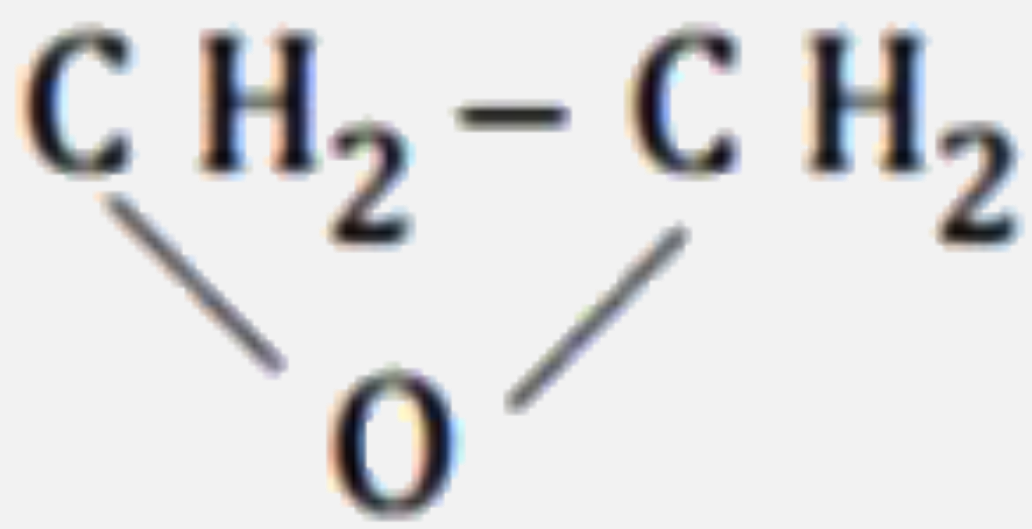Reaction between diethyl cadmium and acetyl chloride lead to the formation of
dimethyl ketone
ethyl methyl ketone
diethyl ketone
acetaldehyde
The correct Answer is:B
To solve the problem of what product is formed when diethyl cadmium reacts with acetyl chloride, we can follow these steps:
Step 1: Identify the Reactants
- Diethyl Cadmium: The chemical formula is C2H5CdC2H5 or (C2H5)2Cd.
- Acetyl Chloride: The chemical formula is CH3COCl.
Step 2: Understand the Nature of the Reaction
Diethyl cadmium acts as a nucleophile due to the presence of the carbon-metal bond (C-Cd). In this case, the carbon atom attached to cadmium has a partial negative charge, making it a good nucleophile.
Step 3: Nucleophilic Attack
The nucleophilic carbon from diethyl cadmium will attack the electrophilic carbon in acetyl chloride. The carbonyl carbon in acetyl chloride is electron-deficient due to the electronegativity of the oxygen atom.
Step 4: Reaction Mechanism
1. The nucleophilic carbon from diethyl cadmium attacks the carbonyl carbon of acetyl chloride.
2. This leads to the formation of a tetrahedral intermediate.
3. The chlorine atom leaves, resulting in the formation of a ketone.
Step 5: Identify the Product
The product formed from this reaction is ethyl methyl ketone, which has the structure CH3COC2H5.
Conclusion
Thus, when diethyl cadmium reacts with acetyl chloride, the product formed is ethyl methyl ketone.
Final Answer
The correct answer is ethyl methyl ketone (Option 2).
---
- Diethyl Cadmium: The chemical formula is C2H5CdC2H5 or (C2H5)2Cd.
- Acetyl Chloride: The chemical formula is CH3COCl.
Diethyl cadmium acts as a nucleophile due to the presence of the carbon-metal bond (C-Cd). In this case, the carbon atom attached to cadmium has a partial negative charge, making it a good nucleophile.
The nucleophilic carbon from diethyl cadmium will attack the electrophilic carbon in acetyl chloride. The carbonyl carbon in acetyl chloride is electron-deficient due to the electronegativity of the oxygen atom.
1. The nucleophilic carbon from diethyl cadmium attacks the carbonyl carbon of acetyl chloride.
2. This leads to the formation of a tetrahedral intermediate.
3. The chlorine atom leaves, resulting in the formation of a ketone.
The product formed from this reaction is ethyl methyl ketone, which has the structure CH3COC2H5.
Thus, when diethyl cadmium reacts with acetyl chloride, the product formed is ethyl methyl ketone.
The correct answer is ethyl methyl ketone (Option 2).
Similar Questions
Knowledge Check
The reaction of 4-bromobenzyl chloride with sodium cyanide in ethanol leads to the formation of :
A4-bromobenzyl cyanideB4-cyanobenzyl chlorideC4-cyanobenzyl cyanideD4-bromo-2-cyanobenzyl chlorideThe reaction of
 with RMgX, leads to the formation of : ARCHOHRBRCHOHCH3CR2CHCH2OHDRCH2CH2OH
with RMgX, leads to the formation of : ARCHOHRBRCHOHCH3CR2CHCH2OHDRCH2CH2OH
Reaction of
 with RMgX lead to formation of
with RMgX lead to formation of
View SolutionIn which of the following reactions, reaction of silver with the given acids lead to the formation of compound of silver, along with liberation of gas?
View SolutionReaction of with RMgX leads to formation of

View SolutionStraming of protoplasm in Amoeba leads to the formation of
View SolutionSuccession in a water body leads to formation of
View SolutionWith reference to formation of compounds from atoms by electron transfer - electrovalency, state the basic steps in the conversion of sodium & chlorine atoms to sodium & chloride ions leading to the formation of the compound - sodium chloride.
[electronic configuration of: Na = 2,8,1 & Cl = 2,8,7]
View Solution

